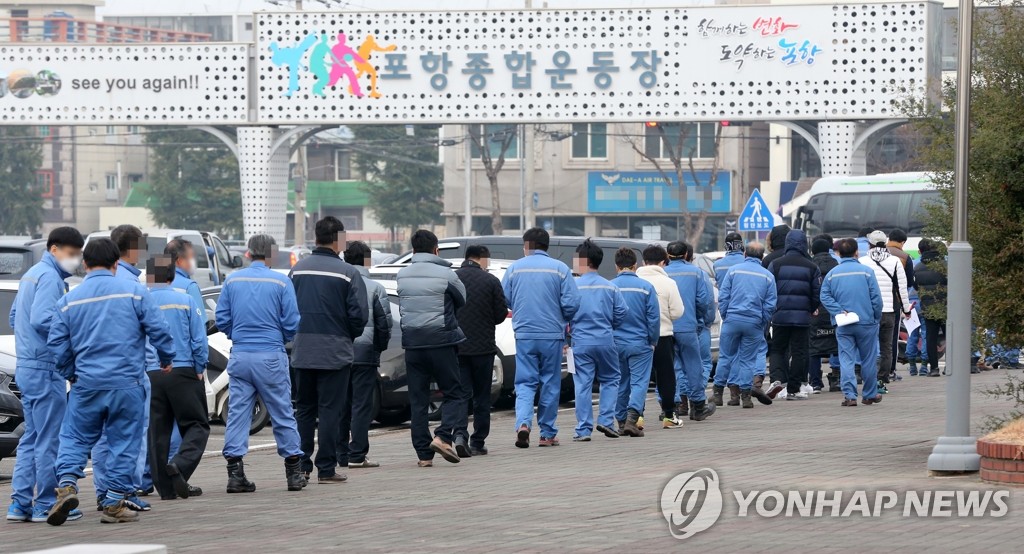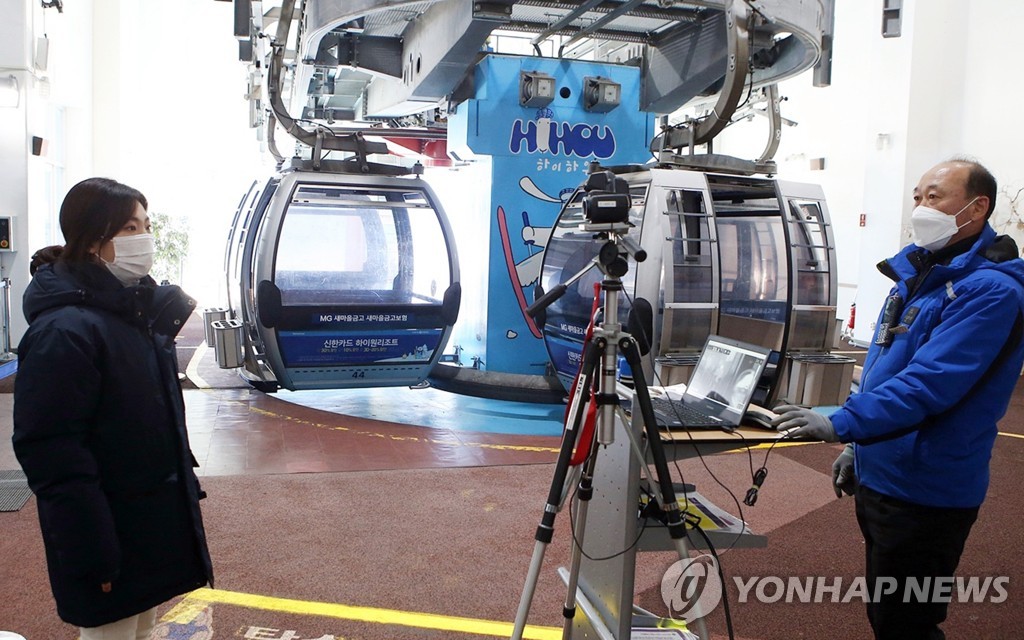- California Assembly OKs highest minimum wage in nation
- S. Korea unveils first graphic cigarette warnings
- US joins with South Korea, Japan in bid to deter North Korea
- LPGA golfer Chun In-gee finally back in action
- S. Korea won’t be top seed in final World Cup qualification round
- US men’s soccer misses 2nd straight Olympics
- US back on track in qualifying with 4-0 win over Guatemala
- High-intensity workout injuries spawn cottage industry
- CDC expands range of Zika mosquitoes into parts of Northeast
- Who knew? ‘The Walking Dead’ is helping families connect
(3rd LD) New virus cases nearing 700 for 3rd day, strongest curbs not considered
South Korea’s daily number of new cases neared 700 for the third consecutive day Friday amid concerns over a bigger and longer-than-expected wave of the pandemic during the winter. But health authorities remained cautious in adopting the toughest virus curbs as they could deal a hard blow to the economy.
The country reported 689 new virus cases, including 673 domestically transmitted ones, raising the total caseload to 40,786, according to the Korea Disease Control and Prevention Agency (KDCA).
Of the 689 new virus cases, 512 were reported in the greater Seoul area that covers Gyeonggi Province and Incheon, west of Seoul.



People wait in line to get tested for COVID-19 in Daegu, southeastern South Korea, on Dec. 11, 2020. (Yonhap)
Friday’s daily caseload marks a slight rise from 682 the previous day and is the second-highest mark since January, when the country reported its first confirmed COVID-19 case.
The number of confirmed cases hit a record high of 909 on Feb. 29. Eight additional coronavirus deaths were reported, raising the death toll to 572.
“Virus cases reported in the wider Seoul area account for 76 percent of the total, and there are no signs of a slowdown,” Yoon Tae-ho, a senior health official, said in a briefing.
“The Level 2 social distancing scheme implemented since Nov. 24 appears to have had a limited impact on reducing virus cases,” he said.
The official urged people to strictly follow the current Level 2.5 social distancing measures, the second-strongest curbs under the five-tier virus restrictions, adding that implementing the highest level of social distancing would severely hurt economic activities.
The country is expected to log around 700-800 cases on Saturday as health authorities and local governments continued to add up numbers, including 60 new cases at a nursing home in Bucheon, west of Seoul, after 539 new cases were confirmed by 6:00 p.m. Friday — already the highest number recorded at that time of the day over the past seven days.
As of 10 p.m., more than 300 new COVID-19 cases were confirmed in Seoul, passing the previous daily record of 295 cases set on Dec. 3. The city said it was still counting.
The country announces its official tally of the previous day at 9:30 a.m.
As part of efforts to curb the virus flare-ups, the authorities will expand virus tests in the greater Seoul area, which has emerged as a hotbed of new infections, on Monday for the next three weeks.
About 150 temporary screening centers will be set up in the Seoul metropolitan area, the authorities said.
The number of drive-thru screening centers will be increased to have more people take virus tests, it said.
The authorities will provide the tests to people for free if they offer their mobile phone numbers.
Health authorities also said they will make 1,000 beds for virus patients available amid looming bed shortages.
Early in the day, Prime Minister Chun Sye-kyun said the government will dispatch some 800 military, police and newly hired civil servants with probationary status to areas of the capital region in a bid to support epidemiological investigations.
Health authorities warned the current wave of the pandemic is growing bigger than the previous ones and last longer, warning that a spike in new coronavirus cases is threatening to undermine the country’s medical system with the number of seriously ill virus patients rising rapidly amid looming shortages of hospital beds.
Adding to concerns is the rising ratio of untraceable infections, according to health authorities.
The percentage of virus cases with unclear transmission routes stayed in the range of 15 percent to 16 percent out of the total in the first six days of December but rose to 20.5 percent Thursday.
Of the 689 new cases announced early in the day, 16 were imported cases, down from 36 the previous day. They include four from the United States, three from Europe and four from Africa.
The number of COVID-19 patients with serious symptoms across the country amounted to 169, down from 172 on Thursday.
The total number of people released from quarantine after making full recoveries came to 31,157, up 520 from Thursday.












